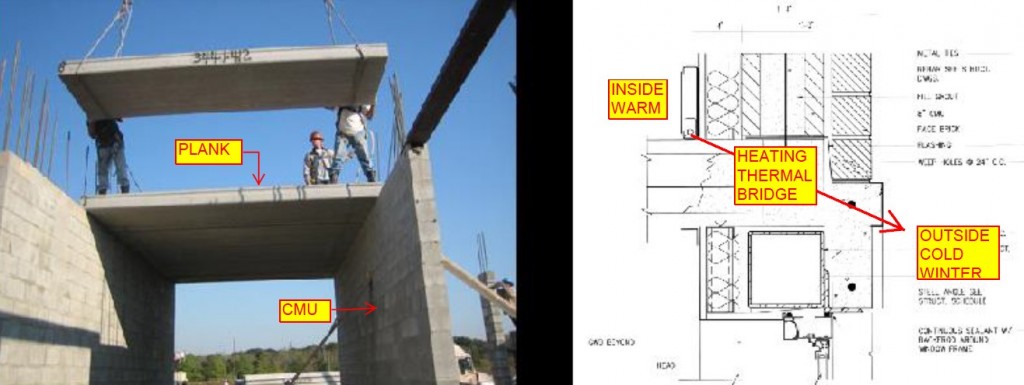Tag: green-construction
August 6, 2018
by Karen Hindie

The June GreenHomeNYC Forum, Sustainability and Social Justice, explored how less advantaged communities can benefit from sustainable development. Our speakers focused on construction, landscaping and agriculture-related jobs for low-income workers. Speakers Matthew Caruso, Program Manager for Intervine, a division of the Hope Program, and Thomas Perry, Bronx Program Director, described training and transitional jobs that prepared workers for permanent positions in construction and landscaping. Jose Chapa, Legislative Campaign Coordinator of the Justice for Farmworkers Campaign, represents farmworkers and agricultural workers across the state. He described the difficulties farmworkers have and attempts to correct them.
Hope Through Sustainable Job Training
Caruso and Perry spoke about the Hope Program, which enables people who have difficulty obtaining a job to acquire the skills necessary to start and maintain sustainable careers. The Hope Program’s Bronx location focuses on green construction and building operation skills through the
Sustainable South Bronx (SSBx) training program and transitional paid jobs for graduates of the program at
Intervine and
Cool Roofs. Through the SSBx 12-week training program, students are provided classroom education, and experience in creating and maintaining green infrastructure. They earn industry certifications in safety and basic construction skills. They also receive assistance with resume writing and interview skills.
(more…)
May 29, 2016
by Kimberly Stempien

Until recently, little attention was given to toxic chemicals that lurk in construction products. Few building manufacturers disclose a full list of what is in their products because US law does not require it. But as scientific studies continue to link these chemicals to such health issues as cancer, reproductive issues, fetal toxins, autism, and asthma, the issue is gaining much needed attention.
Construction is an important sector to analyze when thinking about trying to reduce environmental toxins. The reason is simple; people are exposed daily, and over many years, to the chemicals that went into the materials that were used to build their own homes. That’s why it’s becoming much more prevalent for builders, architects, and designers to consider an approach that mitigates potential effects on human health and the environment, and they are increasingly turning to certifications and declarations, such as
Health Product Declaration,
LEED, Cradle to Cradle, and
Green Seal, which employ a risk-based approach to consider use of and exposure to harmful chemicals.
(more…)
November 2, 2015
by Katya Guletsky
An energy audit can help building managers and owners understand and control the costs of operating a building. But what happens during the audit, what does an auditor look for and what techniques do they use? How do they present their recommendations? What would warrant an energy gut rehab?

At the October forum hosted at the
Knoll showroom three presenters, each with over 30 years of experience, explained to us the basics of sustainable renovations using a wide variety of case studies ranging from single family homes to energy gut rehabs for multifamily residences.
(more…)
September 10, 2015
by Jaime Alvarez
Two seasoned building professionals and a financier came together on Wednesday, August 19th at the GreenHomeNYC August forum held at the Hafele showroom to share their experiences regarding the economic value of green building with a full room of over 50 curious attendees. The presentations emphasized that with attention to detail, green buildings can be built affordably.
Steve Bluestone of The Bluestone Organization: Making green building cost competitive
Affordable housing developer, Steven Bluestone, began the discussion showing how through years of practice and commitment to constant improvement his firm has left behind stagnant building practices and forged ahead past code requirements with a simpler building process which delivers more efficient buildings with significant cost savings to tenants.
For over fifty years, small to medium multi-family housing has been built using concrete masonry unit, “cinder block,” structural walls and planks for flooring and roofing. The buildings would be structurally sound, but energy efficiency suffered as a result of minimal insulation, air sealing, and “thermal bridges”— where conductive material such as concrete is exposed to outdoor weather drawing in cold temperature indoors during winter, and warmer temperatures in summer, raising heating and cooling costs.
 (more…)
(more…)
 The June GreenHomeNYC Forum, Sustainability and Social Justice, explored how less advantaged communities can benefit from sustainable development. Our speakers focused on construction, landscaping and agriculture-related jobs for low-income workers. Speakers Matthew Caruso, Program Manager for Intervine, a division of the Hope Program, and Thomas Perry, Bronx Program Director, described training and transitional jobs that prepared workers for permanent positions in construction and landscaping. Jose Chapa, Legislative Campaign Coordinator of the Justice for Farmworkers Campaign, represents farmworkers and agricultural workers across the state. He described the difficulties farmworkers have and attempts to correct them.
Hope Through Sustainable Job Training
Caruso and Perry spoke about the Hope Program, which enables people who have difficulty obtaining a job to acquire the skills necessary to start and maintain sustainable careers. The Hope Program’s Bronx location focuses on green construction and building operation skills through the Sustainable South Bronx (SSBx) training program and transitional paid jobs for graduates of the program at Intervine and Cool Roofs. Through the SSBx 12-week training program, students are provided classroom education, and experience in creating and maintaining green infrastructure. They earn industry certifications in safety and basic construction skills. They also receive assistance with resume writing and interview skills.
(more…)
The June GreenHomeNYC Forum, Sustainability and Social Justice, explored how less advantaged communities can benefit from sustainable development. Our speakers focused on construction, landscaping and agriculture-related jobs for low-income workers. Speakers Matthew Caruso, Program Manager for Intervine, a division of the Hope Program, and Thomas Perry, Bronx Program Director, described training and transitional jobs that prepared workers for permanent positions in construction and landscaping. Jose Chapa, Legislative Campaign Coordinator of the Justice for Farmworkers Campaign, represents farmworkers and agricultural workers across the state. He described the difficulties farmworkers have and attempts to correct them.
Hope Through Sustainable Job Training
Caruso and Perry spoke about the Hope Program, which enables people who have difficulty obtaining a job to acquire the skills necessary to start and maintain sustainable careers. The Hope Program’s Bronx location focuses on green construction and building operation skills through the Sustainable South Bronx (SSBx) training program and transitional paid jobs for graduates of the program at Intervine and Cool Roofs. Through the SSBx 12-week training program, students are provided classroom education, and experience in creating and maintaining green infrastructure. They earn industry certifications in safety and basic construction skills. They also receive assistance with resume writing and interview skills.
(more…)
 Until recently, little attention was given to toxic chemicals that lurk in construction products. Few building manufacturers disclose a full list of what is in their products because US law does not require it. But as scientific studies continue to link these chemicals to such health issues as cancer, reproductive issues, fetal toxins, autism, and asthma, the issue is gaining much needed attention.
Construction is an important sector to analyze when thinking about trying to reduce environmental toxins. The reason is simple; people are exposed daily, and over many years, to the chemicals that went into the materials that were used to build their own homes. That’s why it’s becoming much more prevalent for builders, architects, and designers to consider an approach that mitigates potential effects on human health and the environment, and they are increasingly turning to certifications and declarations, such as Health Product Declaration, LEED, Cradle to Cradle, and Green Seal, which employ a risk-based approach to consider use of and exposure to harmful chemicals.
(more…)
Until recently, little attention was given to toxic chemicals that lurk in construction products. Few building manufacturers disclose a full list of what is in their products because US law does not require it. But as scientific studies continue to link these chemicals to such health issues as cancer, reproductive issues, fetal toxins, autism, and asthma, the issue is gaining much needed attention.
Construction is an important sector to analyze when thinking about trying to reduce environmental toxins. The reason is simple; people are exposed daily, and over many years, to the chemicals that went into the materials that were used to build their own homes. That’s why it’s becoming much more prevalent for builders, architects, and designers to consider an approach that mitigates potential effects on human health and the environment, and they are increasingly turning to certifications and declarations, such as Health Product Declaration, LEED, Cradle to Cradle, and Green Seal, which employ a risk-based approach to consider use of and exposure to harmful chemicals.
(more…)
 At the October forum hosted at the Knoll showroom three presenters, each with over 30 years of experience, explained to us the basics of sustainable renovations using a wide variety of case studies ranging from single family homes to energy gut rehabs for multifamily residences.
(more…)
At the October forum hosted at the Knoll showroom three presenters, each with over 30 years of experience, explained to us the basics of sustainable renovations using a wide variety of case studies ranging from single family homes to energy gut rehabs for multifamily residences.
(more…)
 (more…)
(more…)
